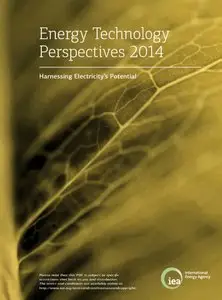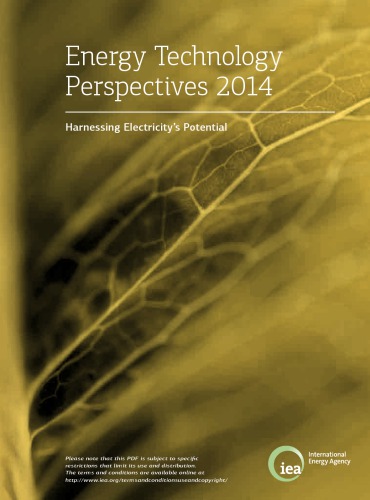Energy Technology Perspectives 2014 (International Energy Agency) by International Energy Agency
English | 2014 | ISBN: 9264208003 | ISBN-13: 9789264208001 | 380 pages | PDF | 8 MB
English | 2014 | ISBN: 9264208003 | ISBN-13: 9789264208001 | 380 pages | PDF | 8 MB
Starting from the premise that electricity will be an increasingly important vector in energy systems of the future, Energy Technology Perspectives 2014 (ETP 2014) takes a deep dive into actions needed to support deployment of sustainable options for generation, distribution and consumption.
In addition to modelling the global outlook to 2050 under different scenarios for more than 500 technology options, ETP 2014 explores the possibility of “pushing the limits” in six key areas:
- Solar Power: Possibly the Dominant Source by 2050
- Natural Gas in Low-Carbon Electricity Systems
- Electrifying Transport: How Can E-mobility Replace Oil?
- Electricity Storage: Costs, Value and Competitiveness
- Attracting Finance for Low-Carbon Generation
- Power Generation in India
Since it was first published in 2006, ETP has evolved into a suite of publications that sets out pathways to a sustainable energy future in which optimal policy support and technology choices are driven by economics, energy security and environmental factors.
- Topic-specific books and papers explore particularly timely subjects or cross-cutting challenges.
- Tracking Clean Energy Progress provides a yearly snapshot of advances in diverse areas, while also showing the interplay among technologies.
- Supported by the ETP analysis, IEA Technology Roadmaps assess the potential for transformation across various technology areas, and outline actions and milestones for deployment.
Collectively, this series lays out the wide range of necessary and achievable steps that can be taken in the near and medium terms to set the stage for long-term energy policy objectives, clearly identifying the roles of energy sector players, policy makers and industry. Next editions will examine the role of technology innovation to meet climate goals (2015) and urban energy systems (2016).
Who will benefit from using ETP 2014? Past experience shows that ETP publications attract wide and varied audiences, including experts in the energy field (e.g. technology analysts and academics), policy makers and heads of governments, as well as business leaders and investors. This reflects the value of the series’ detailed and transparent quantitative modelling analysis and well–rounded commentary, which ultimately support high-level policy messages.



